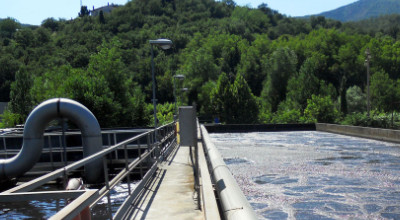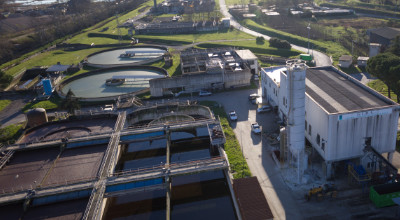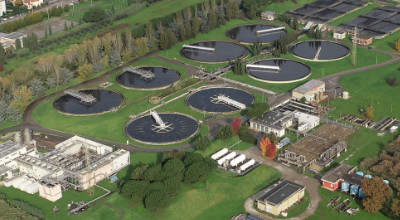BANDI GARA 2025
Nessuna procedura di gara in corso.
Ai sensi dell'art. 23 del D. LGS. 36/2023 si pubblica il Link alla BDNCP:
Nessuna procedura di gara in corso.
Ai sensi dell'art. 23 del D. LGS. 36/2023 si pubblica il Link alla BDNCP:
In data 31.05.2024 il Presidente del CDA ha conferito incarico inerente l'attività di attestazione degli obblighi di pubblicazione all'Organismo di Vigilanza in composizione collegiale.
TUSCANY REGION
Environment and Energy Directorate
Local Public Services, Energy, Air Pollution Sector
Managerial Decree no. 21934 of 03.11.2022
Subject of the deed: Partial liquidation of commitments undertaken in favour of the company GIDA Spa with DD no. 6630 of 23.11.2005
REGIONE TOSCANA
Direzione Ambiente Ed Energia
Settore Servizi Pubblici Locali, Energia, Inquinamento Atmosferico
Decreto Dirigenziale n. 21934 del 03.11.2022
Oggetto dell’atto: Liquidazione parziale impegni assunti a favore della società GIDA Spa con DD n. 6630 del 23.11.2005

With a process that began in 1997, the depuration plants of the municipalities of Vaiano, Vernio and Cantagallo also became part of the system: they're all characterized by being located along the Bisenzio river and by treating discharges mainly originating from the textile industry. Also for these plants, the Company has provided, where necessary, structural adjustments.
The sewage depuration plant of Vaiano (30,000 P.E.), treats an average of 8,000 cubic meters/day on weekdays, reducing about 4,000 kg/day of COD and little less than 150 kg/day of surfactants. It basically consists of equalization, denitrification, biological oxidation, secondary sedimentation and final ozonation.
The sludge line consists of gravity thickening, aerobic digestion and mechanical dewatering with centrifuge. The sludge resulting from the purification process amounts to about 2,000 t/year at 18% of D.M.
The sewage treatment plant of Vernio (30,000 P.E.), on weekdays, treats an average of 7,000 cubic meters/day, reducing about 4,000 kg/day of COD and little less than 100 kg/day of surfactants. It basically consists of equalization, biological oxidation and secondary sedimentation. It is also planned to install a final filtration section for the reduction of suspended solids. The sludge line consists of gravity thickening, aerobic digestion and mechanical dewatering with belt press. The sludge resulting from the purification process amounts to about 1,500 t/year at 20% of D.M.
The sewage treatment plant of Cantagallo (35,000 P.E.), on weekdays, treats an average of 10,000 cubic meters/day, reducing about 4,000 kg/day of COD and just under 100 kg/day of surfactants. Basically, it consists of equalization, denitrification, biological oxidation, secondary sedimentation. The peculiarity of this plant is to be completely covered. It is also planned to install a final section followed by ozonation for the reduction of color. The sludge line consists of gravity thickening, aerobic digestion and mechanical dewatering with centrifuge. The sludge resulting from the purification process amounts to about 1,500 t/y at 20% of D.M.

The second largest depuration plant in Prato is Calice which was started in 1985 and is located in the western part of the municipality, on the border with the Municipality of Agliana. The plant was structurally adapted in 2000 and almost doubled in 2002.
The sewage drained in the west of the city and those coming from the nearby Municipality of Montemurlo converge treatment plant of Prato-Calice (190,000 P.E.).
The Calice depuration plant, on weekdays can treat up to 39,000 cubic meters/day and can break down up to 20,000 kg/day of COD and 1100 kg/day of surfactants. Basically it consists of equalization, primary sedimentation, denitrification, biological oxidation, secondary sedimentation, clear final flocculation, sand filters and ozonation. The sludge line consists of gravity thickening, mechanical dewatering with centrifuge and filter press. The resulting sludge from the purification process can amount up to 10,000 t/year with a variable humidity between 64 and 74%.

The centerpiece of the centralized depuration system is Baciacavallo purification plant, located in the south-east of the city, near the border with the Municipality of Poggio a Caiano. The previously existing millponds Mazzoni, Bresci and Romita together with the pressurised collectors that drain the two new industrial areas (macrolotti) converge on it. The first core of the plant dates back to 1980.
In 1986 the treatment line was almost doubled.
In 1992 the ozonation plant was built for the removal of surfactants and color. In 1999 the tertiary treatment of clariflocculation was doubled and at the same time the dewatering section of the residual sludge was strengthened and modernized.
On weekdays, the plant can treat up to 130,000 cubic meters/day, reducing up to 100,000 kg/day of COD and 4,500 kg/day of surfactants. Basically it consists of equalization, primary sedimentation, biological oxidation, secondary sedimentation, clariflocculation and final refinement with ozone, for the reduction of color and residual surfactants. The sludge line consists of gravity thickening, mechanical dewatering with centrifuges and sludge incineration.
The latter section includes a 100 t/day multistorey incinerator, equipped with post-combustion, gas treatment train, filter bags and continuous emission analyser. The production of sludge resulting from the purification process can reach 30,000 t/year at 75% humidity.